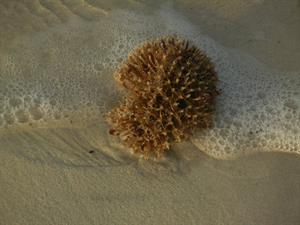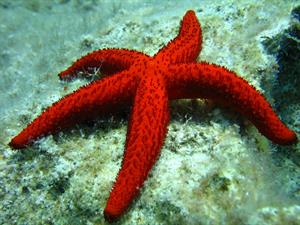Read, listen and learn some new words.
(Lasi, klausies un mācies jaunos vārdiņus!)
- Sponge
Sponge is any of the primitive multicellular aquatic animals. They number approximately 5,000 described species and inhabit all seas, where they occur attached to surfaces from the intertidal zone to depths of 8,500 metres or more. Adult sponges lack a definite nervous system and musculature and do not show movements of body parts. Early naturalists regarded the sponges as plants because of their frequent branching form and their lack of obvious movement. The animal nature of sponges was first described in 1755.

sponge — [spʌndʒ] — sūklis
- Sea star
Sea star, also called starfish, any marine invertebrate of the class Asteroidea having rays, or arms, surrounding an indistinct central disk. Despite their older common name, they are not fishes. The roughly 1,600 living species of sea stars occur in all oceans; the northern Pacific has the greatest variety. Most species are 20 to 30 cm across, some are only 1 cm, and others are as much as 65 cm across. Sea star arms – typically five in number – are hollow and, like the disk, covered with short spines.

sea star — [ˈsiː .stɑːr] — jūras zvaigzne
starfish — [ˈstɑː.fɪʃ] — jūras zvaigzne